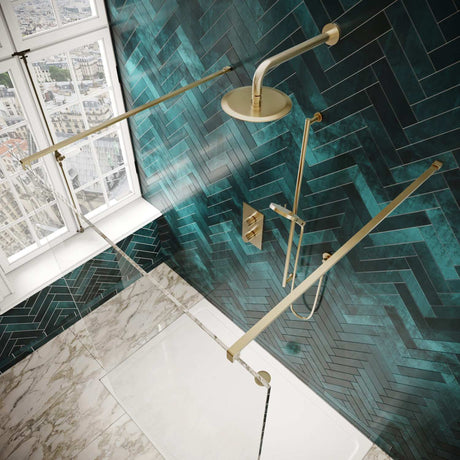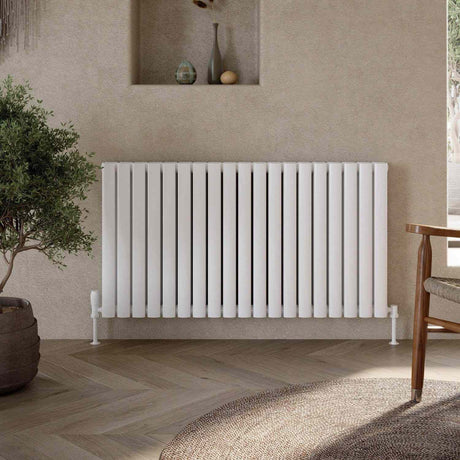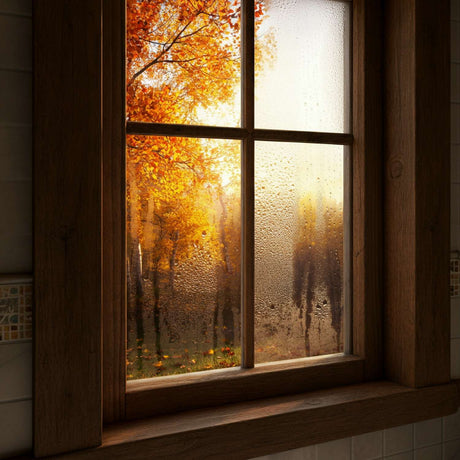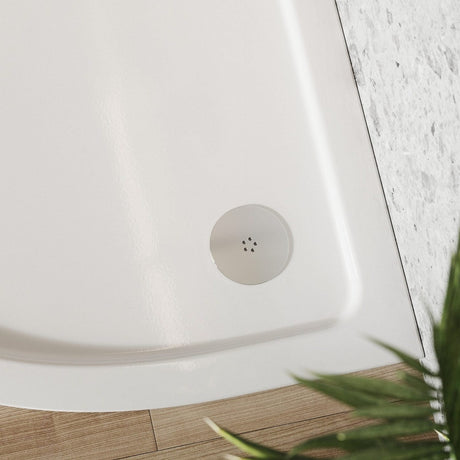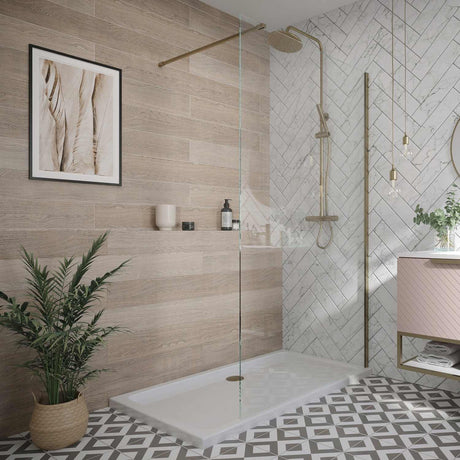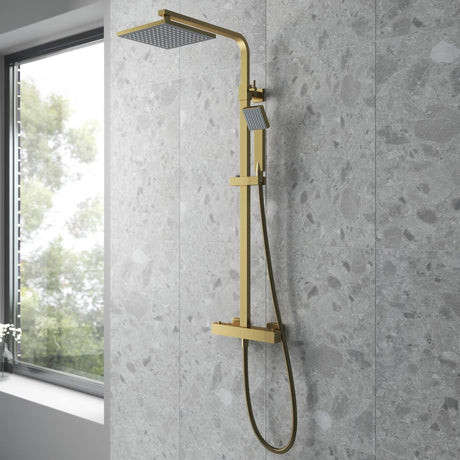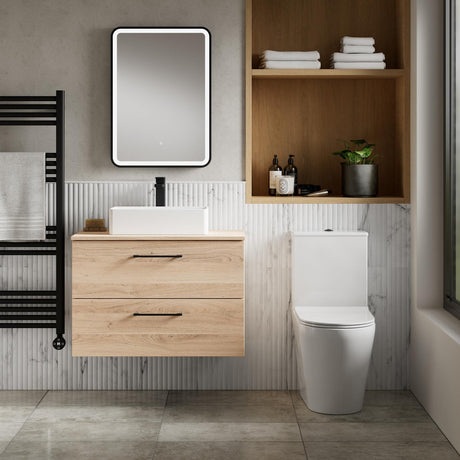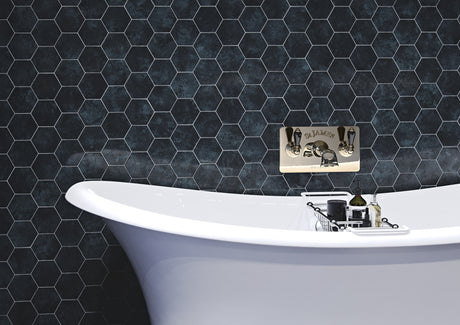Freestanding Bath Buying Guide
Freestanding baths have surged in popularity over recent years, and it's easy to see why. Combining elegance with versatility, they are a striking centrepiece in any bathroom. But before purchasing one of these luxurious tubs, it's essential to understand the benefits, considerations, and potential drawbacks.
This guide will walk you through everything you need to know, from the advantages of freestanding baths to practical tips for selecting the perfect one for your home.
What is a Freestanding Bath, and Why Are They Popular?
A freestanding bath is exactly as it sounds: a bathtub that stands independently without the need to be connected to walls or built into alcoves. These tubs are designed to sit directly on your bathroom floor and can be positioned almost anywhere that your plumbing allows.
There are many reasons why freestanding baths have won the hearts of homeowners and interior decorators alike. Not only do they exude luxury and sophistication, but they also add a unique and stylish statement to bathrooms of all sizes.
Benefits of Freestanding Baths
Freestanding baths come with numerous advantages that go beyond their aesthetic appeal. Here's why they are a popular choice among homeowners.
1. Striking Aesthetic Appeal
Freestanding baths are often seen in high-end hotels and luxury homes, making them synonymous with elegance. Whether you choose a modern slipper tub or a vintage clawfoot design, these baths create a focal point that elevates your bathroom's overall look.
2. Design Flexibility
One of the biggest perks of freestanding bathtubs is versatility. Unlike built-in baths, these tubs can be placed anywhere in your bathroom, provided your plumbing setup supports it. Want your tub under a skylight for stargazing or near a window with a scenic view? Freestanding baths make these options possible.
3. Ease of Installation
Freestanding baths are generally easier to install compared to built-in tubs. Since they don't require tiling or structural wall integrations, fitting these bathtubs can be a straightforward process with fewer steps.
4. Freestanding Bath Shower Mixers
For added convenience, many freestanding baths are compatible with stylish bath shower mixers. These freestanding bath shower mixers combine water flow with aesthetic appeal, perfectly complementing the stunning design of your tub.
5. Moveability
If a redesign or bathroom refresh is in your future, freestanding baths can be repositioned with minimal effort. Unlike their built-in counterparts, they offer flexibility when it comes to rearranging your bathroom layout.
What are the Downsides of a Freestanding Bath?
While there's no denying their charm, freestanding baths aren't for everyone. Here are a few drawbacks to keep in mind.
1. Higher Cost
Luxury freestanding tubs tend to command a higher price tag compared to standard built-in options, such as the Beaufort Whitchurch 1270mm Corner Freestanding Bath. Additionally, high-end materials such as cast iron or stone can further increase the cost.
2. Storage Challenges
Unlike built-in baths, most freestanding tubs lack integrated ledges or shelves. This can make storing bath essentials like shampoo and soap inconvenient. The good news? Stylish bath trays or caddies are a practical solution to this issue.
3. Weight Considerations
Freestanding baths, especially those made from materials like cast iron or stone, are often much heavier than standard bathtubs. Before installation, ensure that your floor can support the weight of the tub, particularly when filled with water.
Factors to Consider When Buying a Freestanding Bath
Before committing to a freestanding bath, here are the key factors to consider to ensure you make an informed purchase.
1. Size and Layout
Measure your bathroom carefully. Freestanding tubs are often larger than built-in options, so make sure your chosen model fits comfortably in the available space without restricting mobility.
2. Material Options
Freestanding baths are available in a variety of materials, each with its pros and cons:
- Acrylic: Lightweight, affordable, and easy to maintain. Ideal for those on a budget.
- Stone: Offers a natural and luxurious look but tends to be heavier and more expensive.
- Cast Iron: Renowned for durability and heat retention but heavier than other materials.
Choose the material that best suits your style preferences and practical requirements.
3. Style
From sleek, modern designs to timeless clawfoot tubs, freestanding baths come in a wide variety of styles. Consider whether you want a contemporary aesthetic or a vintage-inspired vibe to complement your bathroom décor.
4. Taps and Fixtures
Freestanding tubs pair wonderfully with freestanding bath shower mixers, wall-mounted taps, or traditional bath fillers. Be sure to choose taps that not only match your preference but also are compatible with your tub's design.
5. Plumbing and Floor Compatibility
Ensure that your bathroom's plumbing layout works well with your desired tub position. Consulting a professional plumber is always a good idea to address drainage and water supply concerns.
Is a Freestanding Bath Better than a Built-In Bath?
The answer depends on your needs and preferences. Freestanding baths excel as stylish accent pieces and offer flexibility in placement. Built-in tubs, on the other hand, are more practical for bathrooms with smaller dimensions and often provide more storage options.
If luxury and aesthetics are your priority, a freestanding bath takes the crown. However, if you value practicality and affordability, a built-in bath might be a better choice.
Are Freestanding Baths Hard to Clean Around?
Cleaning around a freestanding bath does require a bit of effort, especially if it's positioned away from walls. But don't worry—with the right tools (like a long-handled mop or duster), maintaining a spotless bathroom is manageable.
Tip for Cleaning
Use mild cleaning solutions recommended for the tub material. Avoid harsh chemicals, especially for baths made from acrylic or stone.
Do You Seal a Freestanding Bath?
Yes, sealing is a crucial step during installation. Once the bath is positioned correctly, apply silicone around the bottom of the tub to securely bond it to the floor. This discreet layer of silicone helps ensure stability and prevents water from seeping underneath, protecting the flooring. Read through our guide on How to Seal a Bath for additional information.
Can a Freestanding Bath Be Up Against a Wall?
While freestanding tubs are meant to stand alone, they can also be placed near or against a wall. This is especially useful in smaller bathrooms where space is limited. Just remember to leave enough room for cleaning behind the tub.
A Statement Worth Making
Freestanding baths are more than just a bathtub; they are a design statement, a luxurious addition, and an experience. While they may come at a higher cost than built-in options, their versatility, aesthetic appeal, and unique charm often make them worth the investment.
Whether you're a fan of modern minimalism or a lover of vintage designs, there's a freestanding bath out there for you. If you're ready to explore a wide range of luxury freestanding tubs, why not start your search today?






